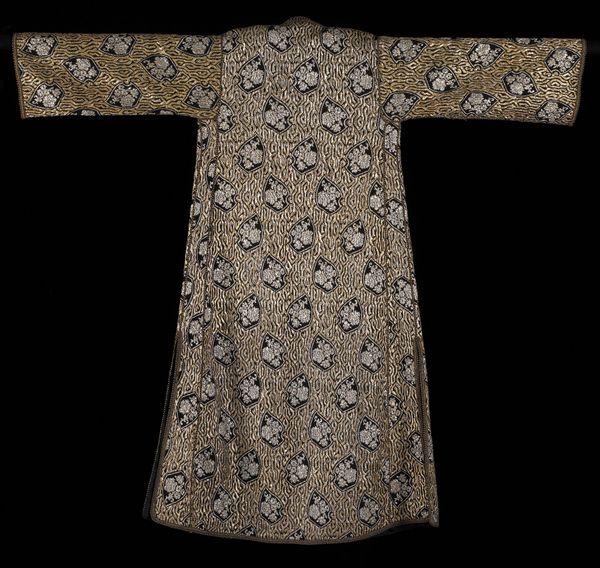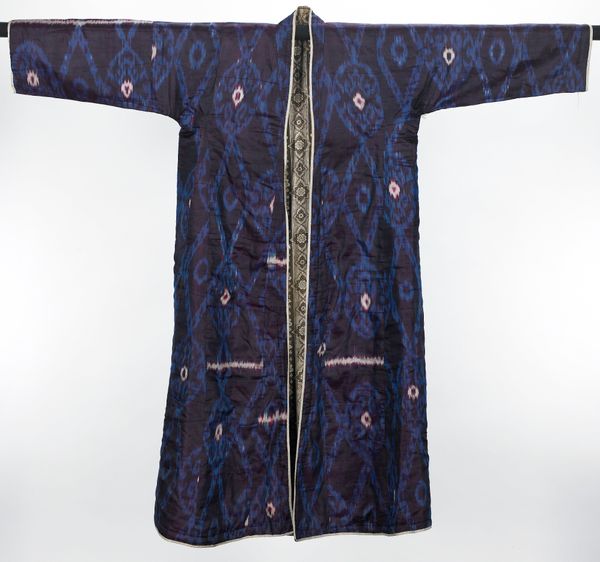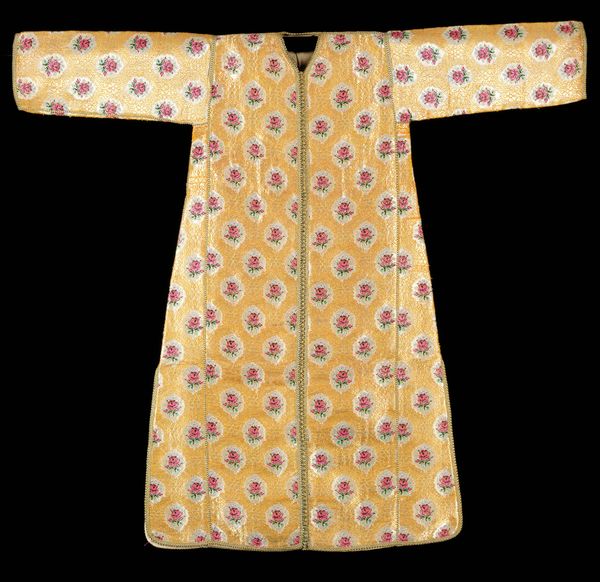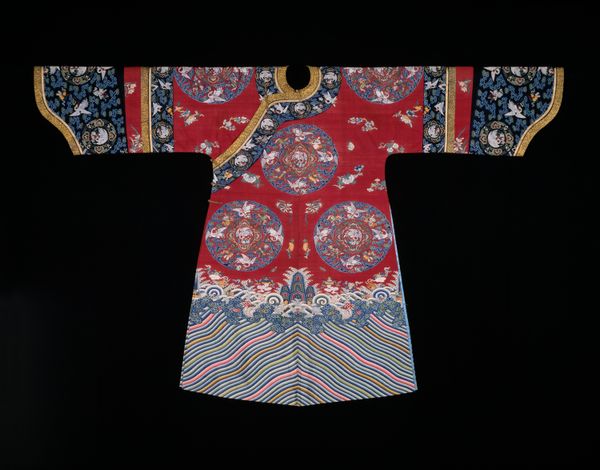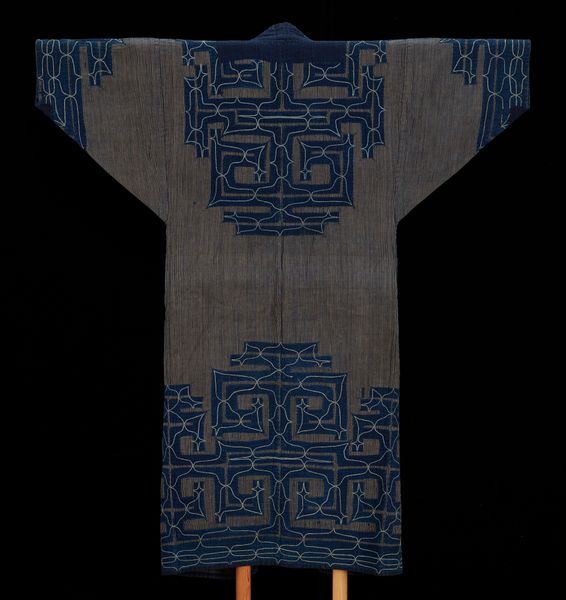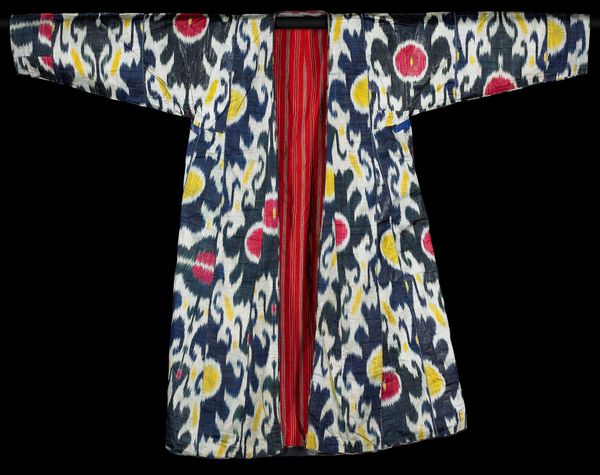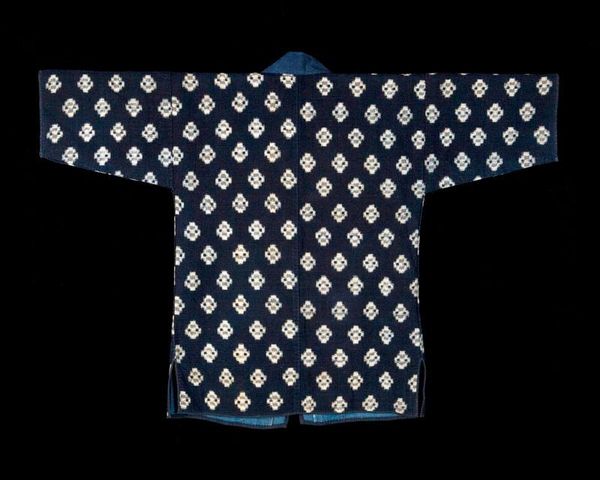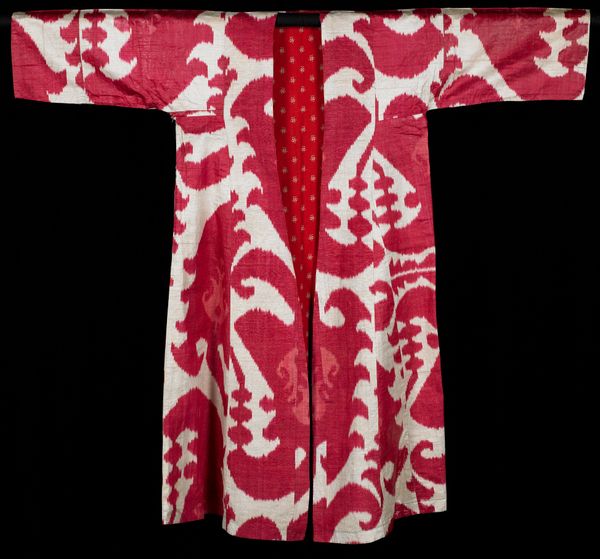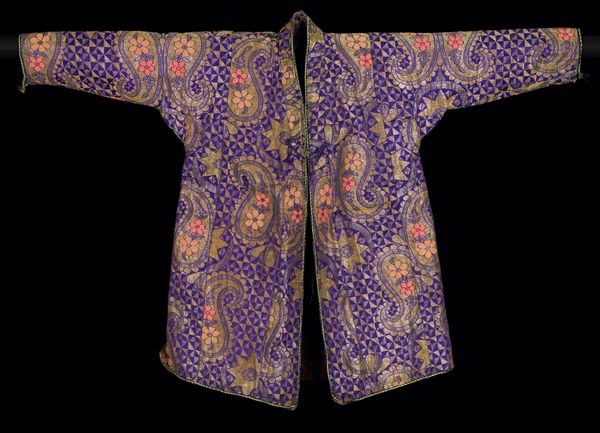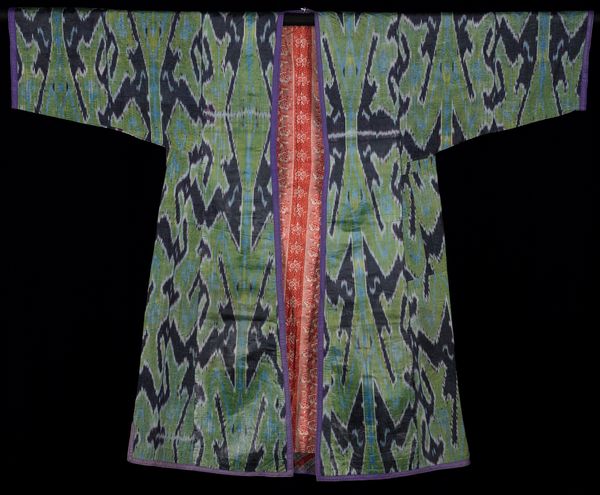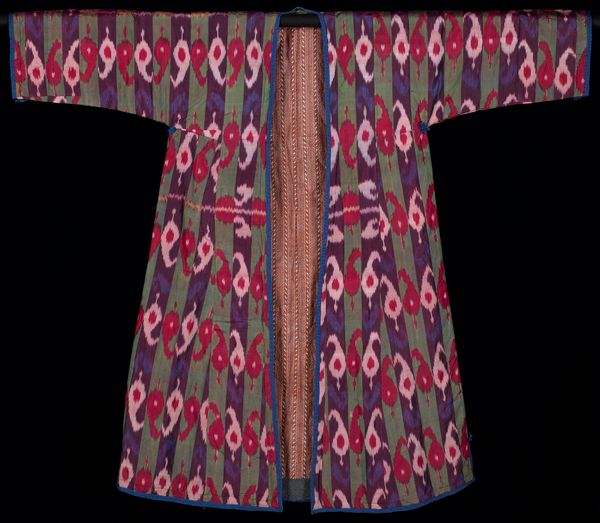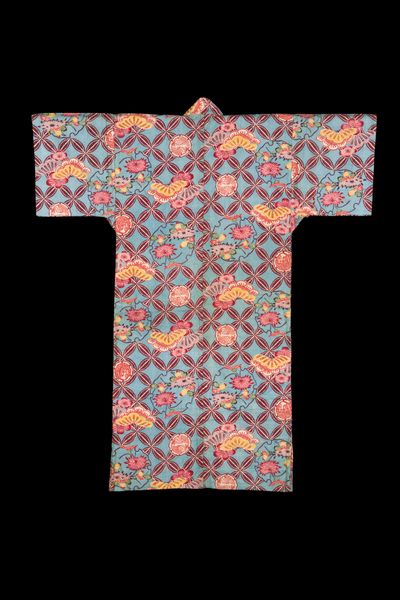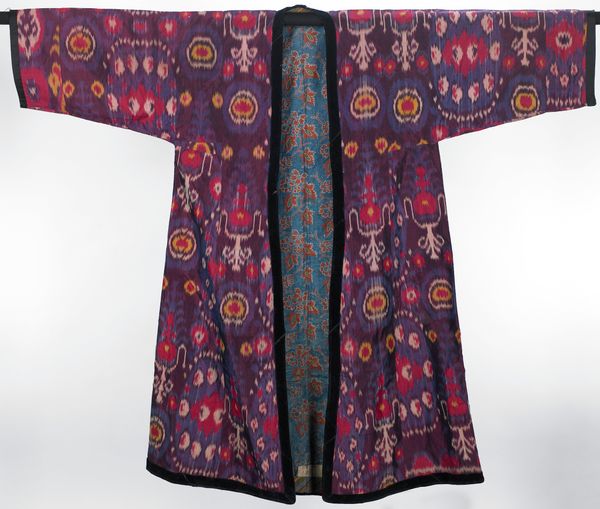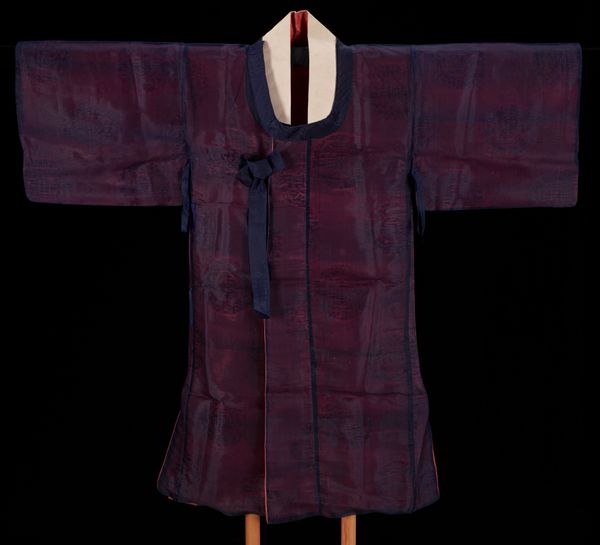
Dark blue-ground Ryūkyūan robe (ryūso) with pattern of irises in a flowing stream c. 19th century
0:00
0:00
silk, weaving, textile
#
silk
#
pattern
#
asian-art
#
weaving
#
textile
#
japan
#
geometric pattern
#
geometric
#
japanese
#
decorative-art
Dimensions: 54 1/4 × 45 1/4 in. (137.8 × 114.94 cm) (overall)
Copyright: Public Domain
This dark blue robe, known as a ryūso, is patterned with irises in a flowing stream and was created by an anonymous artist. Ryūkyū textiles, like this robe, are not merely aesthetic objects; they are deeply embedded in the history of trade, tribute, and cultural exchange between Okinawa, China, and Japan. The vibrant blues achieved through indigo dyeing, coupled with the delicate iris motifs, speak to the sophisticated techniques and aesthetic sensibilities of Ryūkyū artisans. Textiles were also used as a form of tribute to powerful entities such as the Ming and Qing Dynasties. The designs and colors were often regulated to reflect social status, with certain patterns reserved for the ruling class. Wearing this ryūso would have been a statement, reflecting both personal identity and political alignment. The irises, abstracted and flowing, represent the adaptability and resilience of the Ryūkyū people navigating complex relationships with their powerful neighbors. It reminds us that clothing can embody a profound sense of place and cultural negotiation.
Comments
minneapolisinstituteofart almost 2 years ago
⋮
This outer robe for a Ryūkyūan woman was decorated using the ēgata paste-resist technique, which is similar to bingata except that only indigo dye is used, thus making it available to commoners. The limitation of a single color may have made it more difficult to make, forcing the dye artist to rely on shading for variation and distinction between the designs. Given the elaborate stencil work of this robe, it could have belonged to a woman of the warrior class. The stencil work features irises, partly submerged baskets, flowing water, and weeping cherry blossoms, creating the impression of a picturesque, meandering river.
Join the conversation
Join millions of artists and users on Artera today and experience the ultimate creative platform.
